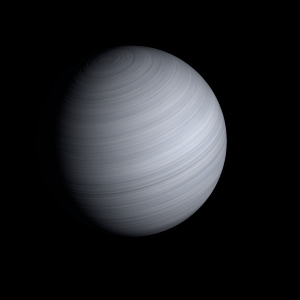|
|
Space Astro
|
Info for exoplanet "Thopaa"
| Scientific (actual) data |
|---|
| Name | HIP 109384 b |
| Planet status | Confirmed |
| Mass sini | 1.56 |
| Orbital period | 499.48 |
| Semi major axis | 1.134 |
| Orbit eccentricity | 0.549 |
| Discovered | 2016 |
| Updated | 2016-02-17 |
| Omega | 104.49 |
| Tperi | 2456340 |
| K | 56.53 |
| Publication | Published in a refereed paper |
| Detection type | Radial Velocity |
| Mass measurement type | Radial Velocity |
| Star name | HIP 109384 |
| Right ascension | 332.41° |
| Declination | 71.31° |
| Mag v | 9.63 |
| Mag k | 7.652 |
| Star distance | 56.2 |
| Star metallicity | -0.26 |
| Star mass | 0.78 |
| Star sp type | G5 |
| Star temperature | 5180 |
| Wikipedia article | HIP 109384 b |
Back
| |
| Fictional info (?) |
|---|
| Suggested name | Thopaa |
| Planet type | Cold planet |
| Having almost no atmosphere to retain heat, it has surface temperatures that vary diurnally more than on any other planet in its solar system, ranging from 115°K (-158°C) at night to 455°K (182°C) during the day across the equatorial regions.
It may have had water vapor oceans in the past, but these would have vaporized as the temperature rose due to a runaway greenhouse effect.
The smooth Borealis basin in the northern hemisphere covers 17 percent of the planet and may be a giant impact feature. |
| Atmosphere | Hydrogen | 97% |
| Hydrogen peroxide | 2.7% |
| Water vapor | 0.035% |
| Neon | 1.6E-5% |
| Atmospheric pressure | 80 bar |
 |
| Moon | Nacarmun Kesi | Large potato shaped crater-filled moon |
| Google search for Thopaa |
|
Website by Joachim Michaelis
|
|
|
|